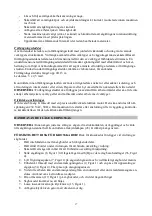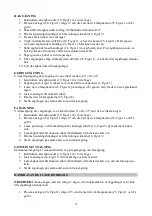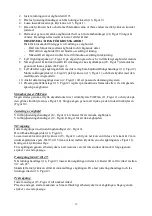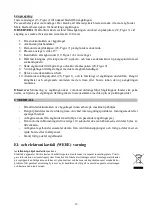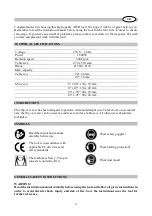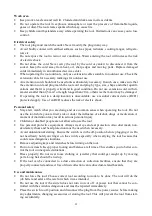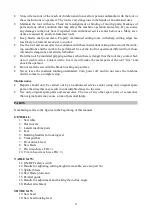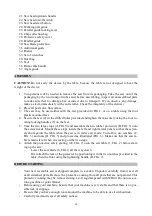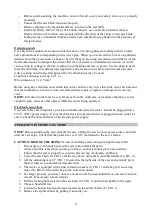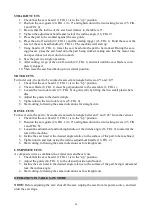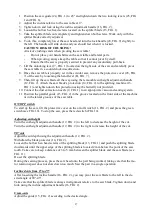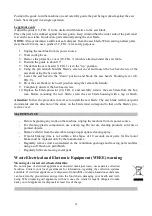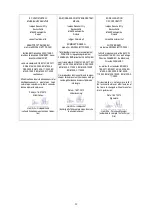
25
-
Before commissioning the machine, ensure that all covers and safety devices are properly
mounted.
-
Ensure that the saw blade functions properly.
-
Remove all parts to be machined that are located on the saw table.
-
Latch and briefly shut off the switch button (about 1 sec.) and check whether the saw
blade’s direction of rotation corresponds with the direction of the arrow on the saw blade.
-
In the presence of material that has already been machined, pay attention to the presence of
foreign bodies.
Extension cords
Use only three-conductor extension cords that have a two-prong plug and outlets with two inlets
and a ground socket corresponding to the tool’s plug. When you use an electric tool at a significant
distance from the power source, check to be sure that you are using an extension cord that is of suf-
ficient dimensions to transport the current that the tool needs. An undersized extension cord will
cause a drop in voltage in the line, leading to overheating and loss of power. Use the chart to deter-
mine the minimum wire dimensions required for an extension cord. Only round extension cords
with a coating noted in the list approved by the laboratories may be used.
Length of extension cord: up to 15 m
Wire dimension: 3 x 2,5 mm²
Before using any extension cord, check that it does not have any wires that stick out or are bare and
that the insulation is not cut or worn out. Immediately repair or replace a damaged or worn-out
cord.
NOTE: Extension cords must be very far away from the work area or located so that they are not
caught in parts, tools or other objects while the tool is being operated.
Electrical connections
Your reversible saw comprises a precision manufactured electric motor. It must be plugged into a
230 V, 50 Hz power supply. If your machine does not operate when it is plugged into an outlet, be
sure to check the characteristics of the electric power supply.
OPERATION IN MITRE SAW MODE
NOTE: Before adjusting the saw: shut off the saw, unplug the saw from its power source, and wait
until the saw stops. Check that the protective cover (28) is attached to the saw’s frame.
CAUTION! RISK OF CRUSHING! A risk of crushing exists when pivoting the saw table!
-
Do not place your hands between the saw table and lateral parts.
-
Always hold the table when you are pivoting it, so that it cannot pivot unexpectedly.
-
Ensure that the saw is properly secured to prevent any involuntary pull-back.
1.
Lower the saw blade (8, FIG. 1) all the way down using the removable handle (36, FIG. 4).
2.
Lift the unlocking lever (7, FIG. 1) located on the right side of the saw and carefully pivot
the saw table in a counterclockwise direction.
3.
The device is equipped with a dust extraction nozzle (2, FIG. 1) and a bag for recovering
chips (34, FIG.4). Attach the bag to the extraction nozzle.
4.
For larger projects, you may connect a vacuum tube from an industrial or universal vacuum
cleaner. If necessary, use an adapter.
5.
Pull the locking bar located on the saw head (19, FIG. 1) and turn it slightly to the right.
6.
The saw head will rise.
7.
Loosen the hollow hex head screws located on the splitter blade (13, FIG. 1).
8.
Remove the splitter blade by pulling it towards you.







